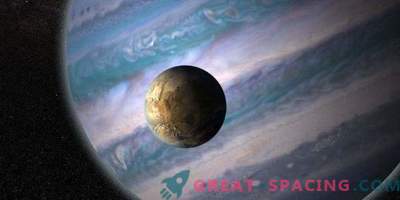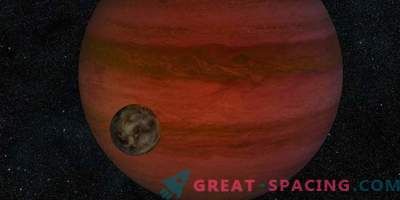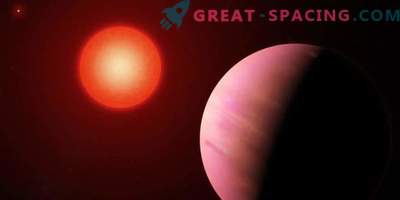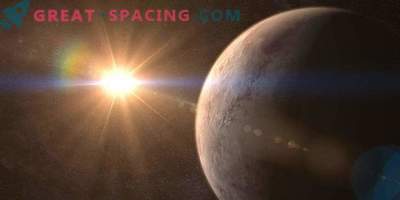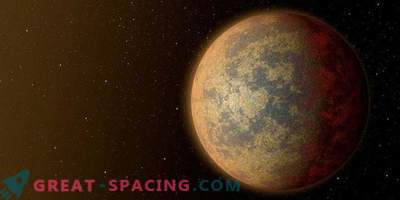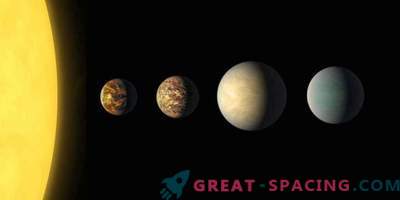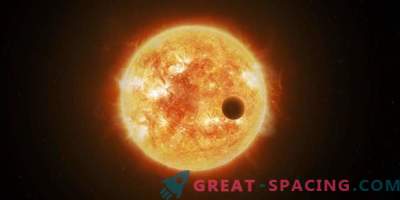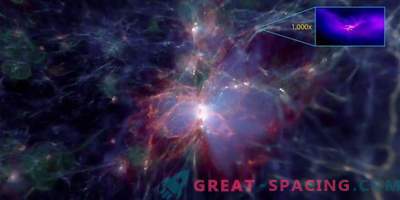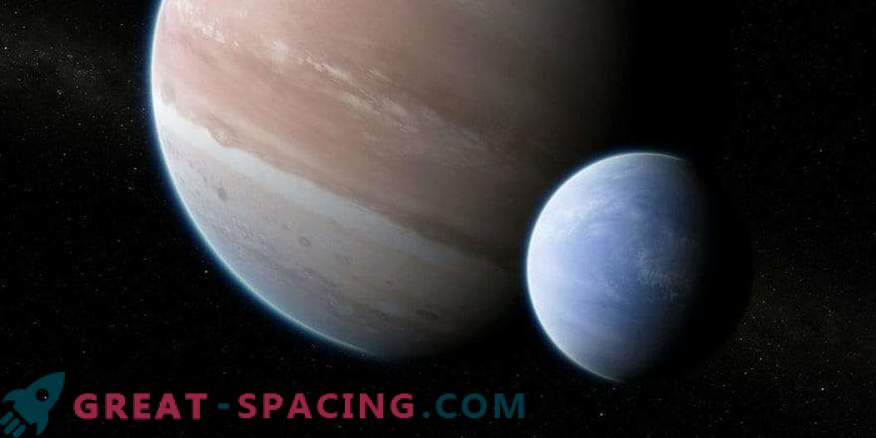
Artistic vision of an exoplanet Kepler-1625b orbiting a star with the moon in tow.
Astronomers from Columbia University used the NASA and Kepler Hubble Space Telescope to obtain strong evidence of the existence of the moon orbiting a gas giant 8000 light-years away from us. The first ex-moon seems unusual, because it resembles the diameter of Neptune in size. Such large satellites were not fixed within our system, where about 200 objects are listed in the catalog.
If the discovery is confirmed by further observations of the Hubble telescope, we will receive important information about the development of planetary systems and, perhaps, we will reconsider the theory of the formation of moons around the planets. In their search for exolun, researchers analyzed data from 284 planets found by Kepler, which had relatively wide orbits with periods of more than 30 days. Thus, we managed to find Kepler-1625b with intriguing anomalies.

Artistic vision of the exoplanet Kepler-1625b orbiting the star with the moon in tow
Scientists observed small deviations and fluctuations in the light curve. The results of Kepler were enough to get 40 hours of observations of the planet, where Hubble collected information 4 times more accurate than Kepler. The telescope recorded a second and much smaller decrease in brightness after 3.5 hours, consistent with the assumption of the presence of the moon. The full transit of the satellite could not be fixed, as the planned observation ended. The researchers also note that such an anomaly can be caused by the gravitational attraction of a hypothetical second planet in the system, although Kepler did not notice it during the 4-year mission. Therefore, the moon is the simplest and most natural explanation for the second fall of the light curve and deviations from the orbit.
It is estimated that the found moon reaches only 1.5% of the mass of the planet, which is several times larger than Jupiter. This is close to the mass ratio between the Earth and the Moon. However, the main difference lies in the fact that Kepler-1625 and its satellite are of the gaseous type.
Exoloons are difficult objects to search for, because they are smaller than a planet, because of which their transit signal seems weak. In addition, ideal candidate planets with hypothetical satellites are located in large orbits, due to which they are also difficult to find.
The host planet and the moon are located in a habitat zone in the native system, where moderate temperatures allow for the presence of liquid water on a solid surface. But we have gaseous worlds before us, so there are hardly signs of life there. Future searches will rush to the planets like Jupiter, located from the star farther than the Earth. It is believed that a breakthrough should be expected after the launch of the James Webb space telescope.
